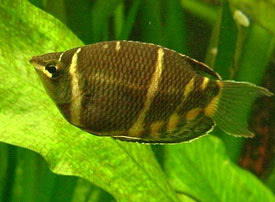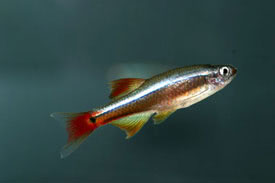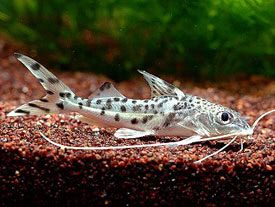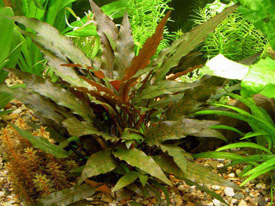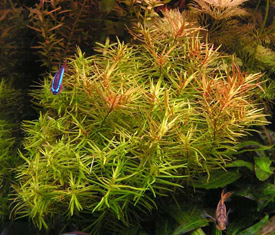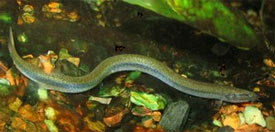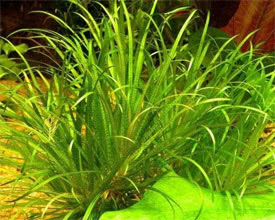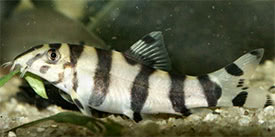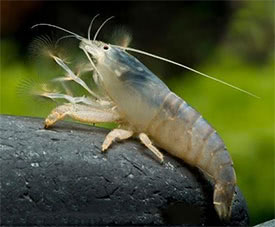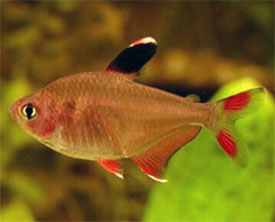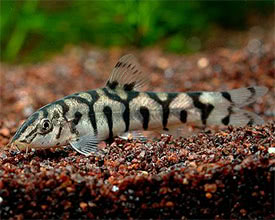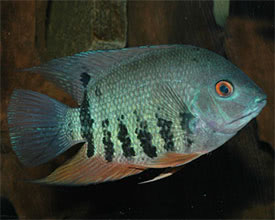
 Magyarul / Hungarian
Magyarul / Hungarian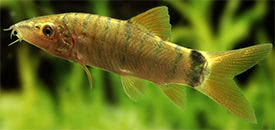
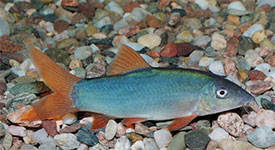
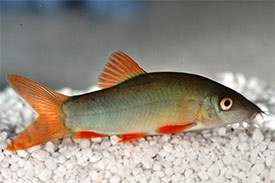
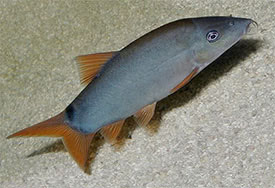
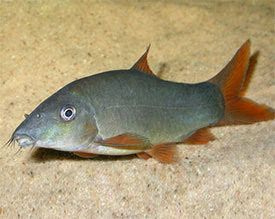
- Scientific name: Yasuhikotakia modesta
- Synonyms: Botia modesta (Bleeker; 1864), Botia rubripinnis (Sauvage, 1876)
- Common name: Redtail Loach
- Group: Loaches
- Distribution: Southeast Asia; Vietnam, Thailand, Laos and Cambodia; Mekong, Chao Phraya and Mae Khlong river basins.
- Size: 20-25 cm
- Biotope: It is quite common across its native range and found in various habitat-types, mostly found in large rivers with a muddy bottom among the rocks, and submerged logs during the daytime, and only coming out to feed after sunset. During the spawning season they migrate to smaller tributary drainages and flooded areas.
- Social behavior: A shy nocturnal loach. They should be kept in a small group of at least 5 species in order to form complex social hierarchies. Territorial, so keep only with larger fish. They can be also nippy, therefore they should not be kept with long-finned fish.
- Diet: Omnivorous; They are chiefly carnivorous in the nature and eat molluscs, insects, worms, and other invertebrates, but will also eat some vegetable matter. In the aquarium they will accept live and frozen foods, but they eat sinking pellets too. As most botiids they also prey on aquatic snails.
- Breeding: It has not been bred in aquarium.
- Tank: Minimum 250 litres
- Population: 4-5 fish for 250 litres
- Decoration: Use densely planted aquarium and build many hiding places of larger rocks and roots. Cover the tank bottom with sand or small gravel as they like to dig in the substrate. Subdued lighting is required.
- Temperature: 23-28 °C
- pH: 6.0-8.0
- Hardness: 2.0-12.0 dGH
- Lifespan: 8-10 years
Mature males are more slender and a little smaller than females.
Is is not possible to breed them in a home aquarium, possible because they are seasonal, migratory spawners in the wild, and it would be hard to imitate it in the aquarium: for example in the lower Mekong basin Yasuhikotakia modesta undergoes an upstream migration that triggered by receding water levels. This migration happen between November and March while from May to July it migrates back as waters rise. During this period they enter flooded areas to spawn. The eggs and fry dispersed into flooded areas, where they complete the initial stages of development. Eggs were recorded between February and July. Juveniles have a series of dark, vertical bars on the flanks which fade as they grow. These loaches are farmed commercially for the hobby via the use of hormones.
http://www.fishbase.org/summary/Yasuhikotakia-modesta.html
http://www.seriouslyfish.com/species/yasuhikotakia-modesta/
http://www.loaches.com/species-index/yasuhikotakia-modesta
https://en.wikipedia.org/wiki/Yasuhikotakia_modesta
http://animal-world.com/encyclo/fresh/loaches/RedtailBotia.php







